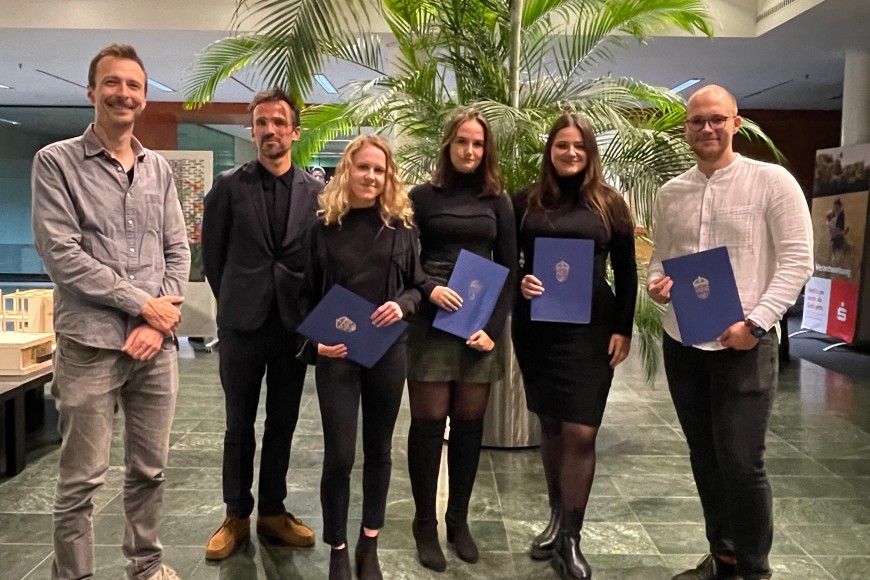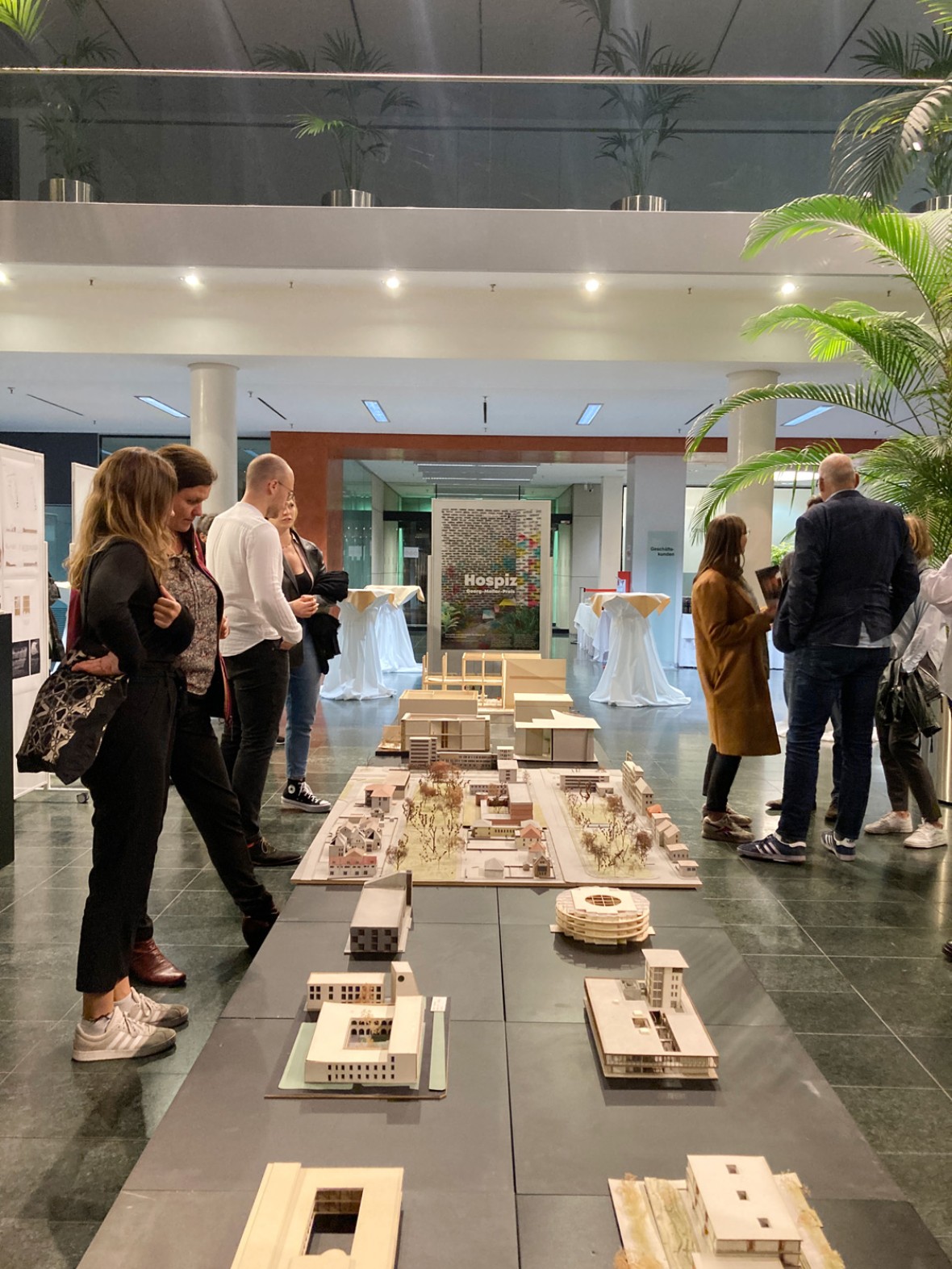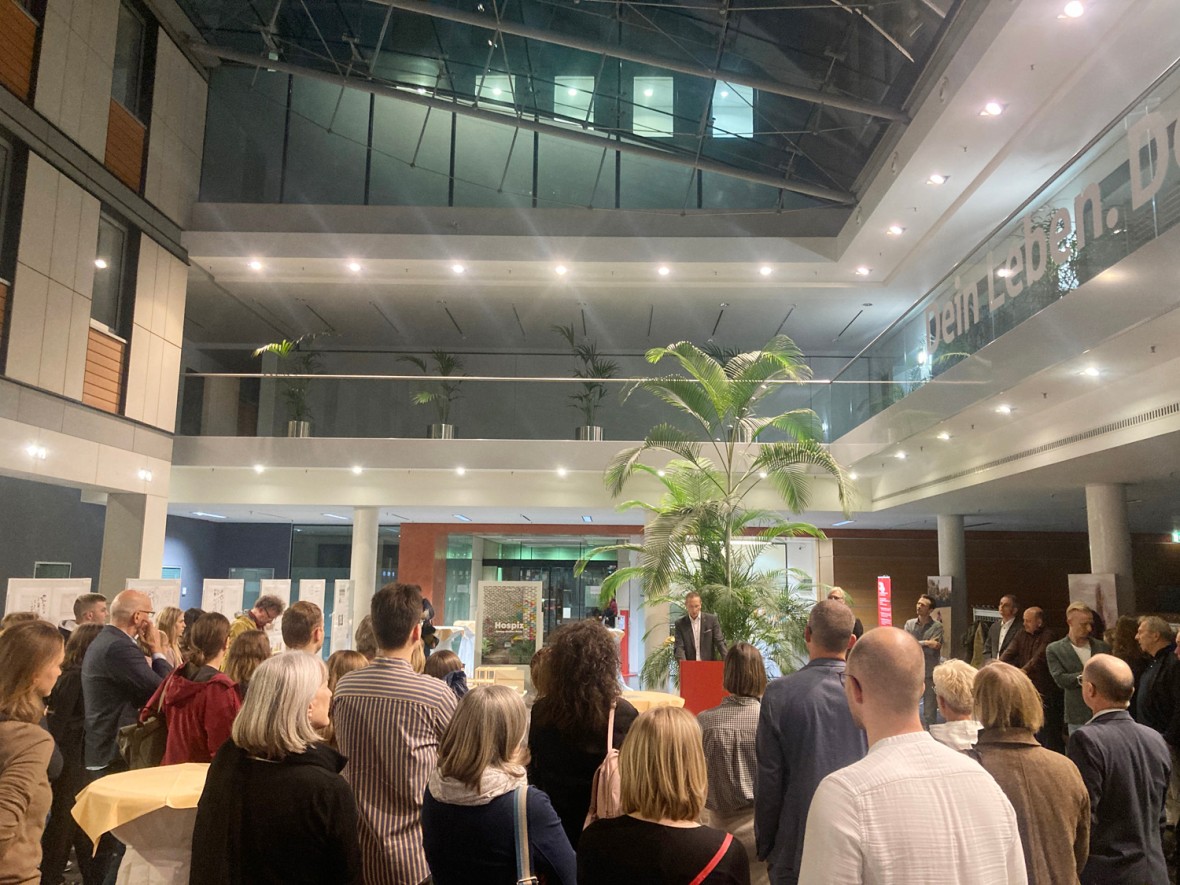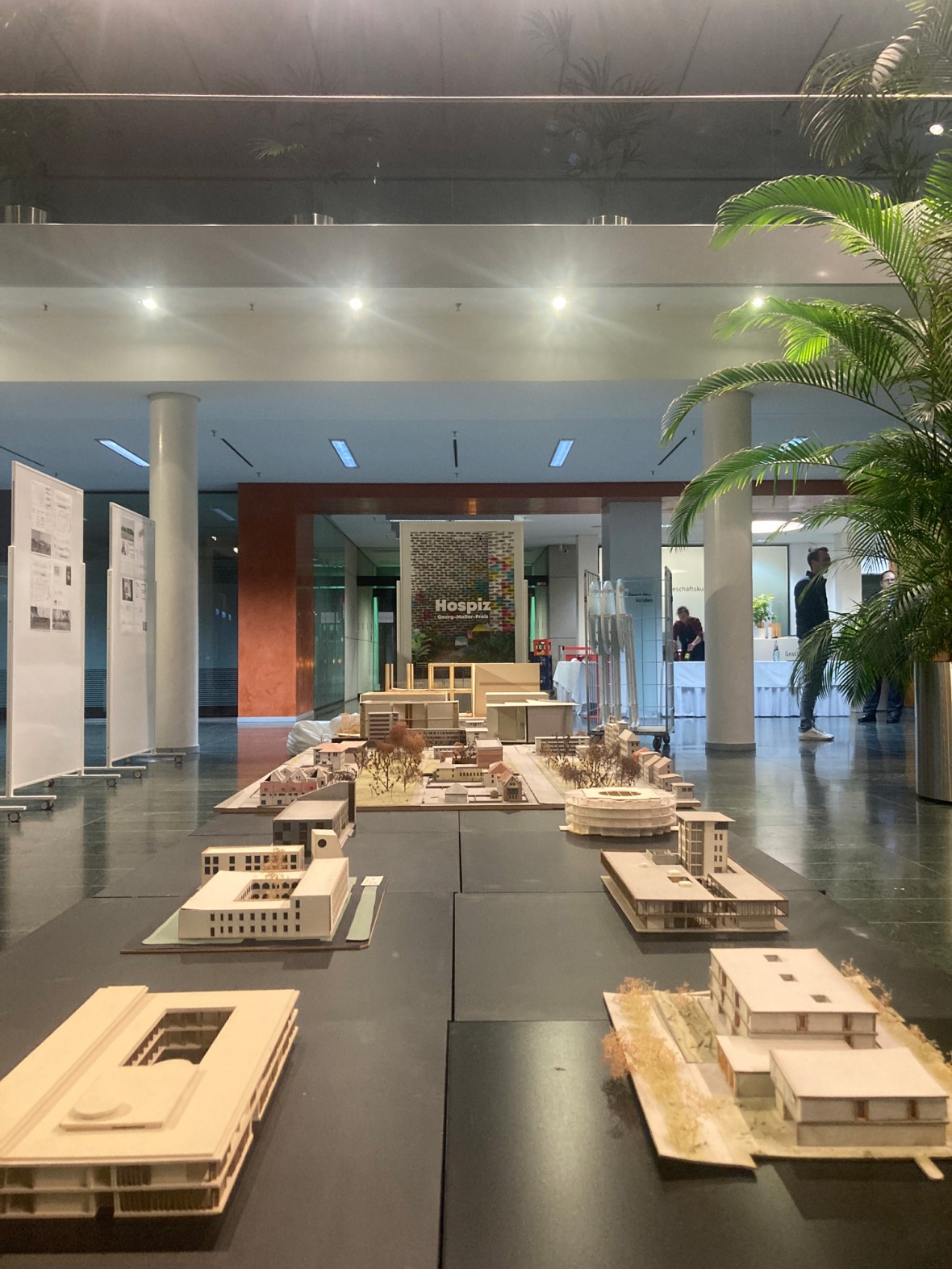Georg Moller Prize 2022
Students design hospice in Darmstadt
2022/10/17
The Georg Moller Prize 2022 goes to Melina Knapp, Clarissa Olbrich, Milena Dähne and Nicolas Sebastian. Seven other works are awarded with recognition.

In memory of the important Hessian master builder Georg Moller, the City of Science Darmstadt annually offers the Moller Prize for architecture students at the TU Darmstadt.
The assignment issued by the Department of Design and Industrial Methods of Building Construction (Martin Baur / Florian Latsch) called for the design of a hospice between the Albert-Schweizer- and Landgraf-Phillips-Anlage in Darmstadt. The aim was to test new ways of designing a place for living and dying in the city. Since there are hardly any references for the design task of an urban hospice, the design process should be understood as an exploratory design. In dialogue with experts, specialists and operators, questions were developed that were to be taken up and discussed in the designs. The aim was to show alternatives to the social segregation of the dying from the living and to design a hospice in such a way that, on the one hand, guests and visitors can participate in the social life of the city and, on the other hand, a protective space for retreat and peace is created.
The jury selected this year's winners from the works created: Melina Knapp and Clarissa Olbrich were awarded 1st prize; Milena Dähne and Nicolas Sebastian received 2nd prize. The works of Tamara Germann, Isabell Habermann, Bomi Jin, Eva Rosalia Neveril, Maxim Puscas, Jana Schweitzer and Fabian Weinhart also received recognition.
Prize money totalling 2,600 euros will be awarded as part of the Georg Moller Prize 2022. The jury unanimously decided to award prize money of 550 euros each for the works of Melina Knapp and Clarissa Olbrich. Milena Dähne and Nicolas Sebastian received prize money of 400 euros each for their works. Due to the very respectful and empathetic approach of all nominated designs to the complex and socially relevant task, recognitions of 100 euros each were awarded to the remaining seven works.
“It is impressive how creatively and sensitively the young architects have dealt with the sensitive topic of 'hospice' and given expression to their ideas and considerations in the form of plans and models,” said Lord Mayor Jochen Partsch on the occasion of the award ceremony and opening of the exhibition of the submitted designs on 11 October at the Sparkasse am Luisenplatz.
About the prize:
The Georg Moller Prize, offered by the City of Science Darmstadt, is awarded for student projects that relate to Darmstadt building and planning tasks. The prize was awarded for the first time in 1989. Since 2000, the prize money has been donated by bauverein AG. The prize is intended to “promote the examination of real and urban planning issues in our city in a creative combination of theory and practice”. In addition, according to the statutes, “the professional discussion between the City of Darmstadt, bauverein AG and the Technical University is to be stimulated”.
The architect and building researcher Georg Moller (1784-1852), as head of the Hessian State Building Department, had a decisive influence on the bourgeois-classicist structure of Darmstadt's urban layout and the cityscape with his essential buildings.
The exhibition in the foyer of the customer centre of the Sparkasse Darmstadt can be seen until 25 October during opening hours.













